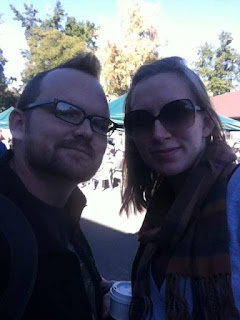Every month I write a book review for my church's missions magazine, New Covenant. When possible, I try to relate the topic of the book I'm reading to the topic of that month's issue. I thought I would share some of them here.
At the beginning of each book review, I share a few Fast Facts: information about the book, its author, its length, the publisher, and where you can find it. I try to touch on the structure of the book, the intent of the author, and the relevancy of the book to the church.
This one was originally published in the July 2016 issue of the New Covenant. You can read issues published August 2016 to present here.
__________________________________________________________
Fast Facts:
At the beginning of each book review, I share a few Fast Facts: information about the book, its author, its length, the publisher, and where you can find it. I try to touch on the structure of the book, the intent of the author, and the relevancy of the book to the church.
This one was originally published in the July 2016 issue of the New Covenant. You can read issues published August 2016 to present here.
__________________________________________________________
Fast Facts:
Title: Beautiful Feet:
Unleashing Women to Everyday Witness
Author: Jessica Leep Fick
Publisher: InterVarsity Press
Length: 197 pages
When Jessica Leep Fick first felt the Lord calling her to be
an evangelist, she was surprised, confused, and emotional. The questions she
prayed were, “God, how is this possible? Don’t you only use men as evangelists?
I have no idea what this even looks like.”
This month New
Covenant is focusing on Ethiopia and the partnerships Covenant is
developing with ministries there. Last month I experienced some trouble
securing a book on India that explored ministry there. In my reading on India
and my growing understanding of the India Gospel League (Covenant’s ministry
partner in India), I have been increasingly intrigued by God’s unique call to
women in ministry and evangelism. On the first page of her book, Fick dives
into this subject asking the question recorded above making it a perfect choice
for this month’s book review.
The book is arranged into twelve chapters and they progress
from being theoretical about the things which often keep women from pursuing
evangelism to being very practical about the tools we need to practice ministry
well (including sleep!) and evangelism models Fick recommends. At the end of
each chapter there is a short section for response, designed to prompt
reflection and prayer on places where women may need to heal or to act in order
to grow as disciples of Jesus. This space for reflection makes the book ideal
for small groups to use as a study and it makes the book easy to apply to every
day life.
Fick is writing as a female evangelist to encourage and
affirm other women who question whether the Lord could possibly use them. Fick
contends that women often discount themselves as active members of evangelism
efforts, either from an assumption that men ought to do the work or from fears
of failure or just being weird. In Beautiful
Feet, Fick calls on women to embrace the unique ways the Lord has made each
of us—intellectual or creative, driven by relationships or a need to
understand.
The title, Beautiful
Feet, is of course a reminder of the verse in Isaiah where the author
exclaims, “How beautiful on the mountains are the feet of those who bring good
news!” Fick records a time of prayer in which she felt the Lord impress this
upon her heart: “Let my daughters know they have beautiful feet. Let them know
they are sent, called, restored and indispensible to me and to my kingdom. Let
my daughters know that I have created them just as I want them to be. I don’t
make mistakes. I see their suffering. And in the midst of suffering I making
something new in their lives and in the church.”
I found Fick’s book to be profound and relevant, healing and
addressing places of doubt in my own heart. I was relieved by her willingness
to broach awkward topics like the ways that women need to be aware of their dress
and bodies in any public situation because of the ways they are perceived by
others.
I believe this book is incredibly relevant to all women in
the church. I found myself underlining repeatedly and even tearing up when
certain subjects touched on tender places in my own heart. Fick manages to
write in a way that is poignant, direct, and honest all at one time. She calls
readers to take healthy risks, knowing that in Jesus failures don’t change
personhood and that many women, in a desire to be perfect, are unable to take
the very action to which they are called. This book is also relevant to men who
are interested in learning about the barriers that keep many women from leading
in the church.
Fick calls women in the church to act, speak, and bear
witness to the goodness of the God that we serve. She sums up her goals in the
first chapter: “I want you to see more of what God has for you. I hope that as
you read you’ll begin to see that Jesus loves you and has created you uniquely
and perfectly to bring good news to others. I want you to walk with Jesus into
the broken places in your life where you’ve believed the lie that you aren’t
enough and, with him guiding you through those dark places, begin to step into
the woman Jesus has made you to be.”
Will you let Jesus walk with you to discover who he has made
you to be?





